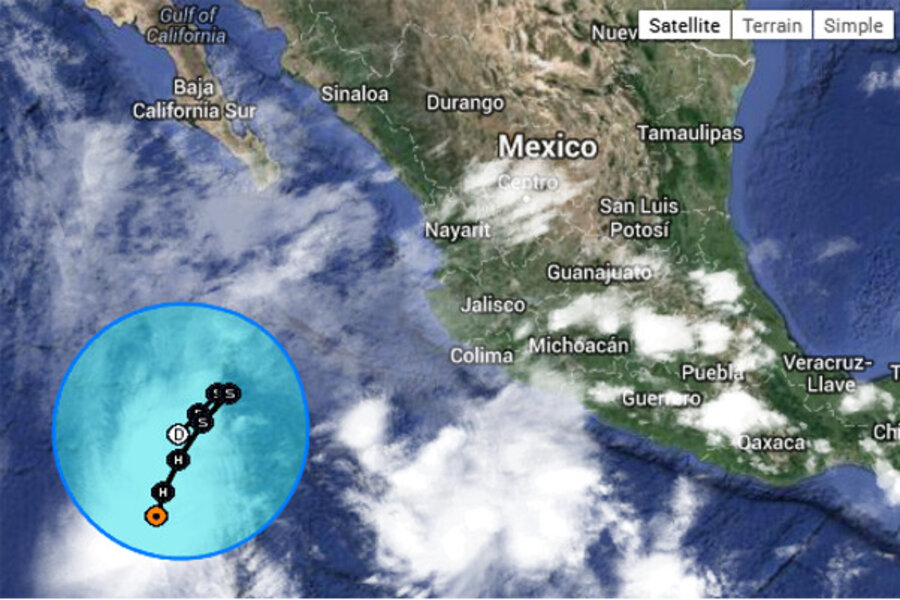Hurricane Amanda rallies briefly, surprising scientists
Loading...
| MEXICO CITY
Hurricane Amanda, the most powerful May storm since 1951, has been raging off Mexico's west coast since late Friday night. The hurricane peaked on Sunday, with a maximum sustained wind speed of 155 miles per hour, and weakened steadily until Tuesday morning, when it unexpectedly regained strength.
The US National Hurricane Center reported with evident surprise that "Amanda apparently still has some gas in the tank," saying that the eye of the hurricane had reappeared and conditions were suggesting Amanda might stick around longer than expected.
Fortunately, hurricane Amanda remained far off Mexico's west coast, where it posed no threat to land even as it spun back up to Category 3 status, with sustained winds of up to 120 m.p.h.
By Tuesday afternoon, hurricane Amanda's brief rally was over. Hurricane Amanda is continuing to bleeding energy into the Pacific Ocean, slowing down to about 105 m.p.h. (Category 2).
The Hurricane Center predicts Amanda will continue to weaken, likely becoming a Category 1 hurricane overnight and a tropical storm by Thursday morning.
May hurricanes are rare, and usually small; the Atlantic hurricane season doesn't even begin until June 1, though the Pacific hurricane season starts May 15. Amanda is the strongest May storm since reliable records began to be kept in the mid-1960s, and is probably the biggest May storm since hurricane Able hit North Carolina in May 1951.
Hurricane Amanda spent much of the weekend as a Category 4 storm, which is characterized by sustained winds of 130 to 156 m.p.h. Category 4 storms on land can cause catastrophic damage, says the Hurricane Center: "Well-built framed homes can sustain severe damage with loss of most of the roof structure and/or some exterior walls. Most trees will be snapped or uprooted and power poles downed. Fallen trees and power poles will isolate residential areas. Power outages will last weeks to possibly months. Most of the area will be uninhabitable for weeks or months."
Amanda is now a Category 2 storm, capable of producing much less damage over land, and even less over the open ocean.
Hurricane Amanda is centered about 575 miles south-southwest off the southern tip of Mexico's Baja California peninsula. It is barely moving – the Hurricane Center says it "continues to plod north-northwestward" at about 5 m.p.h. – and will almost certainly not make landfall before it blows out.
Material from The Associated Press was used in this report.






